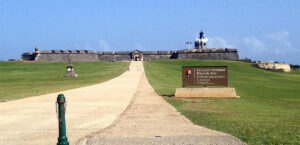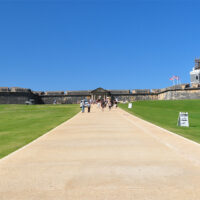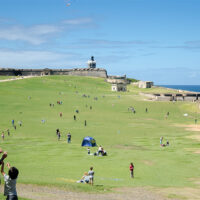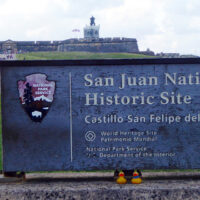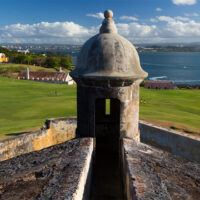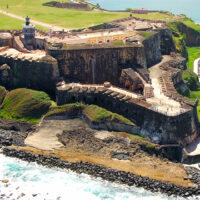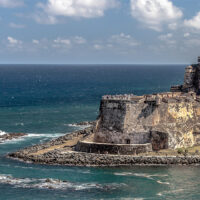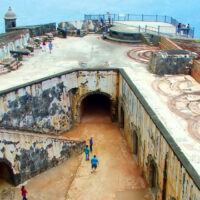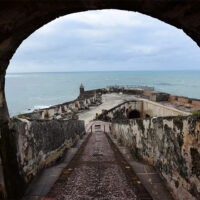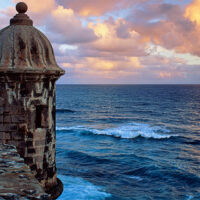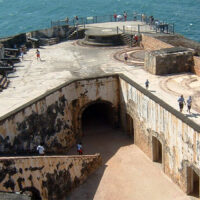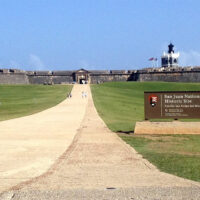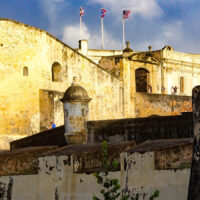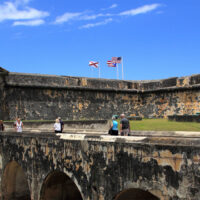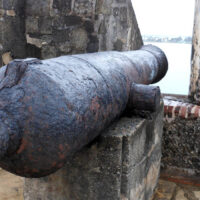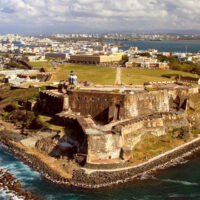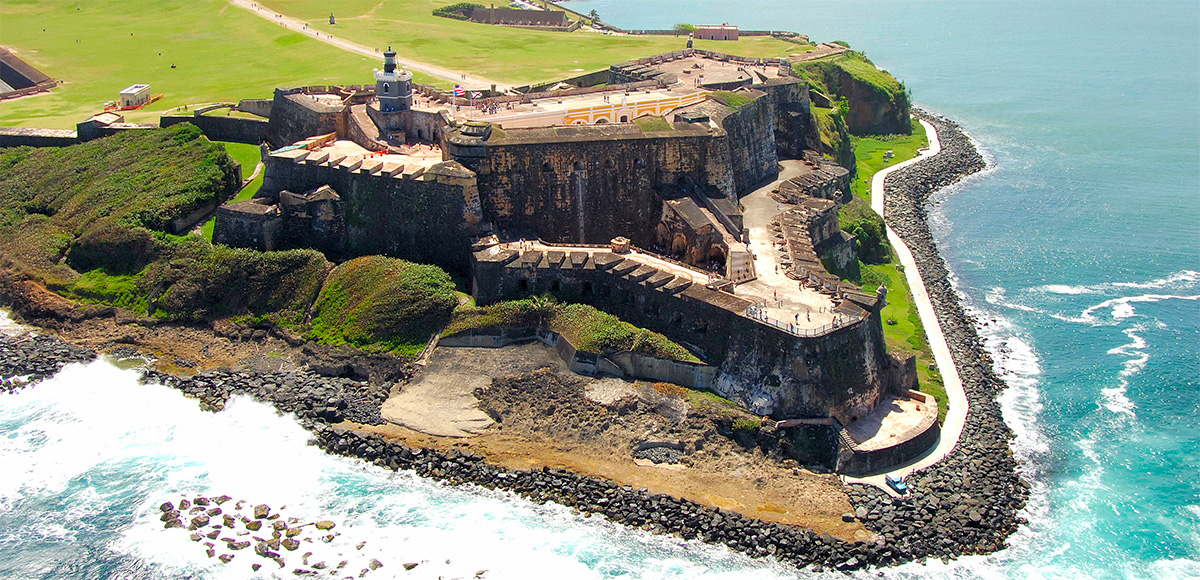
Castle San Felipe del Morro “El Morro”
San Juan, Puerto Rico
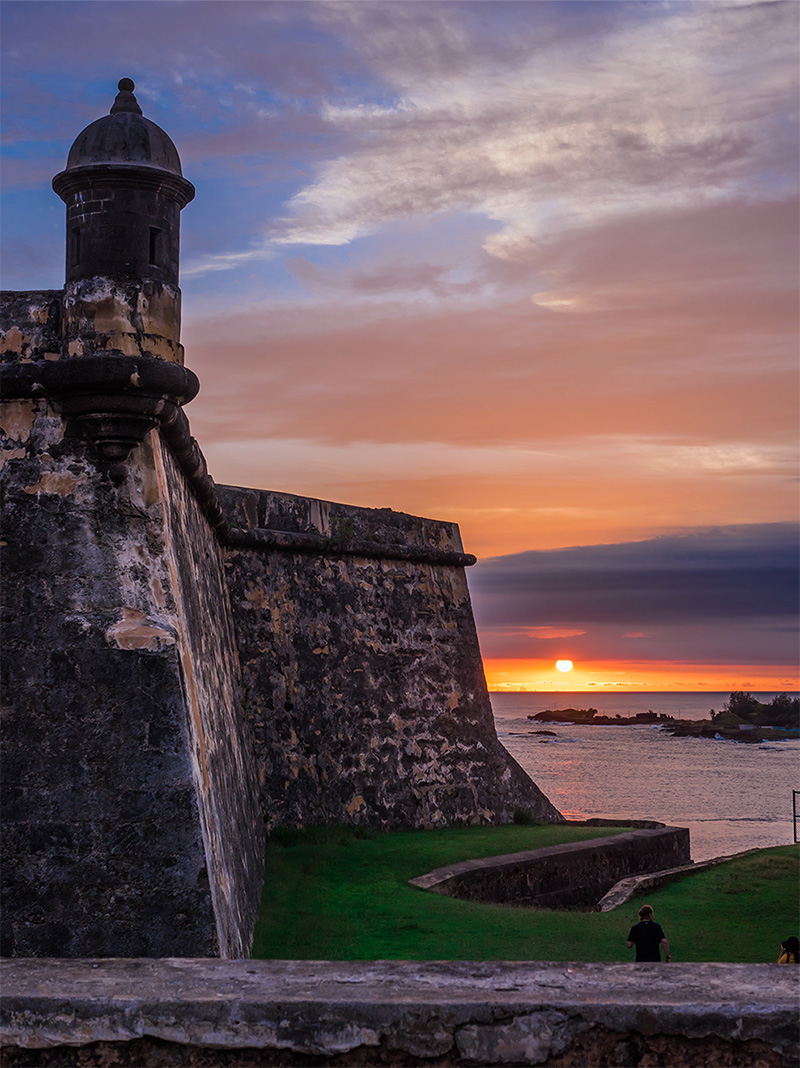
Castle San Felipe del Morro, commonly known as “El Morro”, stands proudly as a symbol of Puerto Rico’s rich colonial history and military legacy. Located at the entrance to San Juan Bay in the historic district of Old San Juan, this grand fortress is one of the most significant and recognizable landmarks on the island. Originally constructed by the Spanish in the 16th century, El Morro was designed to protect the strategic port of San Juan from invaders, particularly pirates and other naval threats. Over the centuries, it evolved into a massive fortification, featuring impressive walls, cannons, and defensive structures that withstood numerous sieges, including attacks by the British, Dutch, and Americans.
Today, El Morro is not just a historic monument but also a UNESCO World Heritage site, drawing visitors from around the world to learn about Puerto Rico’s cultural heritage.
Its towering presence and breathtaking views of the Atlantic Ocean, combined with its storied past, make it one of Puerto Rico’s most visited and celebrated attractions. Whether you’re interested in history, architecture, or simply soaking in the stunning vistas, El Morro offers a unique glimpse into the island’s military past and its continued significance in Puerto Rican identity.
A Strategic Location and Historical Significance
Built on a 140-foot-high promontory at the entrance to San Juan Bay, El Morro was designed to protect the strategic Spanish colonial port city of San Juan from maritime threats. For nearly 500 years, the fortification played a key military role, serving as a defensive stronghold for both Spain and later, the United States.
Architecture and Structure
The fortification consists of six levels, with breathtaking views of the Atlantic Ocean and the surrounding Caribbean islands. Each level offers panoramic vistas, making it a popular destination for tourists and photographers alike. The fort’s design incorporates a series of ramps, tunnels, and steep stairs, allowing visitors to explore its various levels while learning about its storied history.
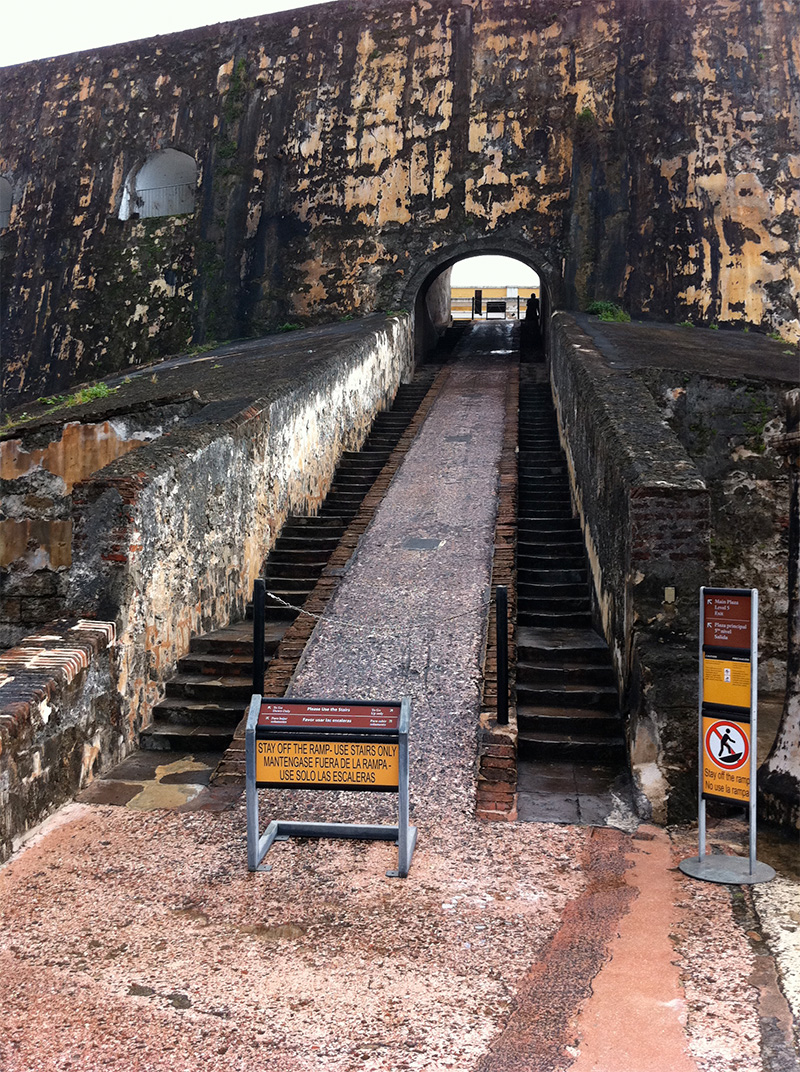 When construction began in 1539, El Morro was not the massive structure seen today. Over time, it underwent significant extensions and modifications, particularly under Spanish military engineers Bautista Antonelli and Juan Bautista Antonelli. By 1790, the fort’s reputation as an invincible stronghold was cemented, and it was regarded as one of the most feared fortifications in the Spanish colonial empire.
When construction began in 1539, El Morro was not the massive structure seen today. Over time, it underwent significant extensions and modifications, particularly under Spanish military engineers Bautista Antonelli and Juan Bautista Antonelli. By 1790, the fort’s reputation as an invincible stronghold was cemented, and it was regarded as one of the most feared fortifications in the Spanish colonial empire.
Military Importance and Defenses
The fort was not only a symbol of Spanish strength but also a formidable line of defense against maritime invasions. El Morro and its counterpart, Fort San Cristóbal, formed a critical defense system for San Juan Bay. Together, they protected the bay and the city from attacks by the British, Dutch, and pirates.
Museum and Visitor Experience
One of the key features of El Morro is its ability to create devastating crossfire with Fortín San Juan de la Cruz (El Cañuelo), a smaller fort located half a mile from El Morro. When enemy ships attempted to enter the bay, the two forts would engage in a coordinated attack, effectively blocking the entrance to San Juan.
Today, Castle San Felipe del Morro is a popular tourist attraction and part of the San Juan National Historic Site, which has been recognized by UNESCO as a World Heritage Site.
Visitors can explore the fort’s many levels, including its cannon areas, barracks, and kitchen and forge. The fort also houses a museum that displays historical artifacts, photographs, and videos about the fort’s role in Puerto Rican history. Guided tours are available hourly in both English and Spanish, but self-guided exploration is also encouraged, with informational brochures and maps provided at the entrance.
Points of Interest within the Fort
Some notable features of El Morro include:
- Garitas (Sentry Boxes): These iconic small enclosures are located around the fort’s outer walls and were once used by Spanish soldiers to guard the fortress. Today, they offer excellent views of the surrounding landscape.
- Lighthouse: The fort’s lighthouse, which has been in operation since 1846, is the oldest light station in Puerto Rico. The lighthouse has a distinctive Hispano-Moorish design, which blends seamlessly with the fort’s architecture.
- Canyon Area: This section of the fort once housed cannons that protected San Juan Bay. Today, it serves as a popular viewing area, offering stunning vistas of the harbor and the Atlantic Ocean.
- Old Tower: The original section of El Morro, the Old Tower remains a significant historical feature. Visitors can still see remnants of the 1898 American bombing that damaged the tower during the Spanish-American War.
- Old tower: The Old Tower or Old Tower is the oldest part of El Morro. If you go down the tunnel, you can see a shell fragment from the 1898 American bombing that is still stuck in the wall.
- The Grounds of El Morro: The vast lawn in front of the fort is a lively gathering spot for families, picnickers, and kite flyers. The area has become a local tradition, especially during the annual Kite Festival in March.
Visiting El Morro
The fort is open daily from 9:00 a.m. to 6:00 p.m., with the exception of New Year’s Day, Thanksgiving, and Christmas. 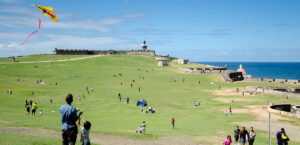 The admission fee is $10 per person for those aged 16 and older, while children under 15 can visit for free. The ticket provides access to both El Morro and Fort San Cristóbal for 24 hours. On certain holidays, such as Martin Luther King Jr. Day, National Park Week, and Veterans Day, the National Park Service offers free admission.
The admission fee is $10 per person for those aged 16 and older, while children under 15 can visit for free. The ticket provides access to both El Morro and Fort San Cristóbal for 24 hours. On certain holidays, such as Martin Luther King Jr. Day, National Park Week, and Veterans Day, the National Park Service offers free admission.
It is recommended that visitors wear appropriate clothing and footwear, as parts of the fort can be exposed to direct sunlight, and some areas, particularly the ramps and stairs, can be slippery during rain. Be sure to bring water to stay hydrated.
A Brief History of El Morro
Castle San Felipe del Morro has a rich history, beginning with its construction in 1539. The fort was initially built as a small structure with just four cannons to defend the entrance to San Juan Bay. Over the centuries, it was expanded and strengthened, with the Antonelli engineers transforming it into a robust masonry fortress capable of withstanding artillery fire.
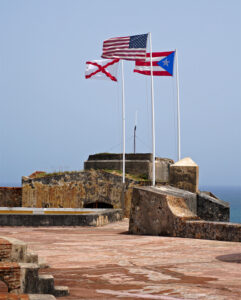 In 1595, the fort faced its first significant test when Sir Francis Drake attempted to attack San Juan. Though Drake’s forces were powerful, the fort’s defenders managed to repel the assault, cementing El Morro’s status as an indomitable fortification. In 1625, the Dutch also tried to capture the fort but were unsuccessful after a prolonged siege.
In 1595, the fort faced its first significant test when Sir Francis Drake attempted to attack San Juan. Though Drake’s forces were powerful, the fort’s defenders managed to repel the assault, cementing El Morro’s status as an indomitable fortification. In 1625, the Dutch also tried to capture the fort but were unsuccessful after a prolonged siege.
In the late 18th century, significant renovations were made under Colonel Thomas O’Daly, which improved the fort’s defenses. By 1797, El Morro had successfully repelled a British attack, proving its resilience once again. However, by the time of the Spanish-American War in 1898, advances in military technology made the fort obsolete. The fort was bombarded by U.S. naval forces during the conflict, marking the end of Spain’s colonial presence in the Americas.
How to Get There
If you’re driving to El Morro, here’s how to reach the historic site:
- From San Juan’s Main Roads: Start by heading toward Old San Juan from the main roads, including Route 26 (Avenida Luis Muñoz Rivera). If you’re coming from the central area of San Juan, follow signs for “Old San Juan” or “Castillo San Felipe del Morro.”
- Navigating to El Morro: Once you’re near the historic district, continue following the signs for El Morro (Castillo San Felipe del Morro). The fortress is located at the western tip of Old San Juan, and you’ll be able to spot it from afar as you approach the coastline.
- Parking Near El Morro: There are several parking options near the fortress, but Old San Juan’s narrow streets can make parking tricky. Consider these options:
Public Parking Lots:
There are several public lots near the entrance of El Morro and throughout Old San Juan. One of the closest is located near Fortín de San Cristóbal, where you can park and walk to El Morro.
Street Parking:
Street parking is available but can be limited. Pay attention to parking meters and restrictions to avoid fines.
Important Tips
- Traffic: Old San Juan can get crowded, especially during peak tourist seasons, so allow extra time to find parking.
- GPS: Using a GPS or a navigation app like Google Maps is highly recommended to navigate the narrow streets and find the best parking spots.
Once you’ve parked, you can easily walk to El Morro. It’s a short, scenic walk from most parking areas, giving you a chance to explore the charming streets of Old San Juan along the way.
Address and Map:
Physical address:
Castle San Felipe del Morro
501 Calle Norzagaray
San Juan, Puerto Rico 00901
Contact:
(787) 729-6960 | (787) 729-6777
View Website
Castle San Felipe del Morro, or El Morro, stands as one of the most recognizable and historically significant landmarks in Puerto Rico. Its history, architectural features, and cultural significance create a unique experience for visitors, offering a glimpse into the island’s colonial past, military history, and enduring cultural identity. Whether you are drawn to its military might, its architectural beauty, or the incredible views, El Morro continues to be a symbol of Puerto Rico’s rich heritage, strength, and resilience.

